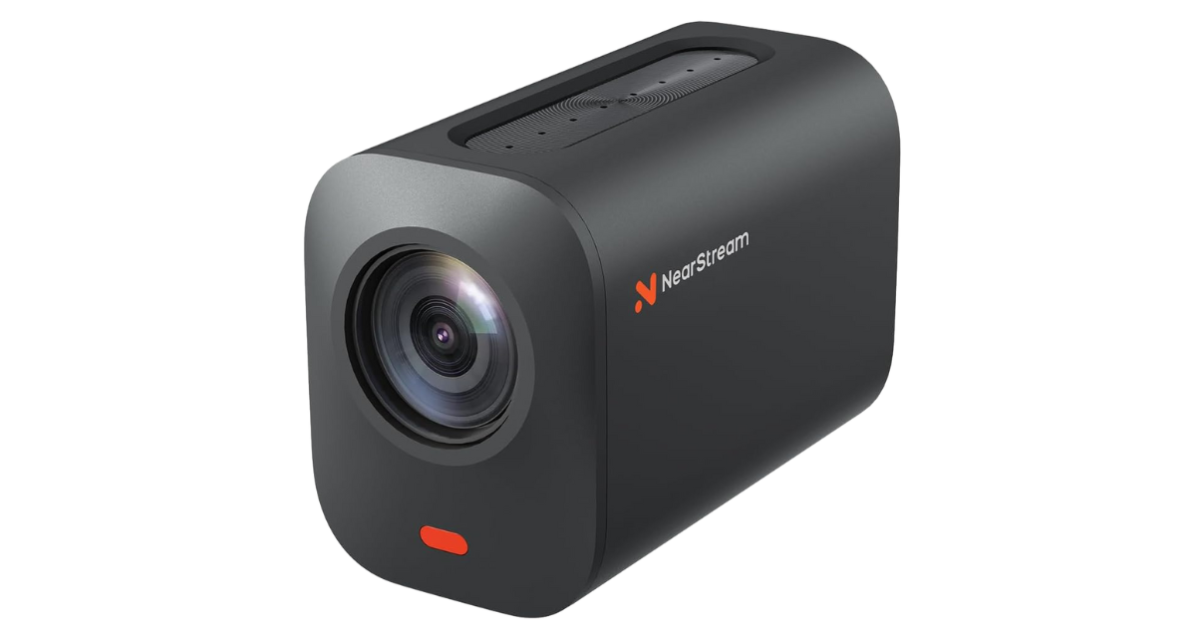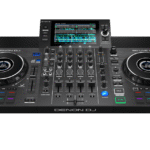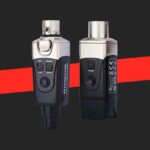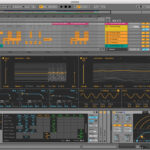Complete review of the NearStream VM33 wireless camera system for DJ live streaming. Explore the app-based control, 10x optical zoom, audio integration, and ease of use for mobile DJ broadcasts.
NearStream VM33 Wireless Camera Review: Simplified Live Streaming for DJs
Simplicity-First Approach to DJ Live Streaming
The NearStream VM33 represents a refreshingly straightforward approach to DJ live streaming that eliminates much of the technical complexity typically associated with broadcasting DJ sets online. For DJs who find the traditional laptop-based streaming setup intimidating—with its multiple software applications, USB cameras, audio interfaces, and general technical overhead—the VM33 offers an alternative path that prioritizes simplicity and immediacy.
The complete package includes everything needed to go live: the camera hardware and the companion smartphone app. Together, these components enable DJs to broadcast directly to streaming platforms without the complexity of traditional multi-device setups.
Hardware Design and Features
The VM33 camera itself is remarkably simple in design, featuring no screens or complex controls on the device. The minimalist approach means nearly all functionality is controlled through the companion app, though several key hardware features deserve attention.
On the front, the camera houses an eight-microphone array. While these microphones are present, DJs will want to use the more capable audio input option for professional-quality sound. The lens features impressive 10x optical zoom—a standout specification that distinguishes the VM33 from competing products. This zoom capability allows DJs to frame shots precisely without physically moving the camera.
An LED indicator on the front illuminates to show various states including live broadcasting status. The bottom of the camera features a standard tripod mount, enabling use with any conventional photography tripod for stable positioning.
The rear panel contains the essential connections: an on/off button, audio input jack (critical for getting DJ mix audio into the stream), a reset button, USB-C port (serving triple duty for charging, power, and computer connectivity), and a micro SD card slot for local recording.
Power and Battery Performance
The VM33 can be powered in multiple ways. The USB-C port accepts charging input, with full charge achieved in a couple of hours. Battery life in wireless mode is substantial—sufficient to exceed typical DJ set durations without concern. The camera can also receive continuous power through the USB-C connection, eliminating battery concerns entirely for longer broadcasts or when convenient power access is available.
When used as a standard USB webcam (plugged directly into a computer), the camera draws power from that connection, requiring no separate power source.
The App: Control Center for Broadcasting
The companion smartphone app serves as the complete control interface for the VM33, and understanding its architecture is essential to grasping how the system works. The app doesn’t directly broadcast video to streaming platforms. Instead, it controls the camera, which connects independently to WiFi networks and broadcasts directly to the internet through that connection.
This architecture means the phone serves as a remote control rather than the actual broadcast device (though it can serve as the broadcast pathway if no WiFi is available, using cellular data). For home or venue use with WiFi, the camera handles broadcasting independently, with the phone purely providing control interface.
The app’s main screen features two prominent buttons: Record and Go Live. Below these sit four tabs: Camera (for viewing and basic control), Graphics (for overlays), Audio Mixer (basic level control), and a plus button accessing advanced settings.
Camera Control and Settings
Tapping into the camera settings reveals extensive adjustability. The zoom function provides the full 10x optical range with smooth, gradual control. Beyond 10x, the system switches to digital zoom with the expected quality degradation—the key differentiator being that the full 10x range maintains optical quality without resolution loss.
Auto-focus, auto-exposure, and auto white balance features work reliably for most DJ streaming scenarios. HDR mode improves image quality in mixed-lighting conditions common in DJ environments. Anti-flicker settings adjust for regional electrical differences (50Hz vs 60Hz), while additional controls address brightness, mirror/flip orientation, and other image parameters.
Audio settings allow selection between the built-in microphone array and the critical 3.5mm line input. The line input is the proper way to get DJ mix audio into the stream—connecting directly from the DJ controller or mixer output to the camera’s audio input delivers clean, professional sound quality to the broadcast.
Additional Features and Capabilities
The app includes several features that, while present, are less relevant for typical DJ use:
- Multiple camera support (up to three cameras can be connected, though one camera typically suffices for DJ streaming)
- Director mode for automatic camera switching (more complex than most DJ streamers need)
- Lower thirds and bug overlays for professional broadcast appearance
- Royalty-free background music library (unnecessary for DJs providing their own music)
- Visual filters (vibrant, black and white, etc.)—somewhat heavy-handed but available for experimentation
Latency settings adjust streaming delay based on network conditions, while recording can occur directly to the micro SD card simultaneously with streaming.
Real-World Performance Testing
Practical testing involved setting the VM33 as a primary broadcast camera, connecting audio directly from a Numark Mixstream Pro controller to the camera’s audio input, and initiating a test stream. The results provide insight into real-world performance expectations.
Video Quality: The image quality proves acceptable for live streaming applications, meeting reasonable expectations for a dedicated streaming camera. While not matching professional broadcast cameras costing five figures, the VM33 delivers serviceable video that looks appropriate for social media DJ streams.
Audio Quality: The audio proved adequate, capturing both DJ mix output and microphone input (using a Shure SM58) with reasonable fidelity. The audio bitrate appears locked at 128 kbps—somewhat disappointing for audio-focused content but acceptable for live streaming where visual and audio elements combine.
Reliability: The stream remained stable throughout testing with no dropouts or technical failures. The camera-to-internet direct connection proved robust.
Setup Simplicity for DJs
The critical advantage of the VM33 becomes clear in actual use: setup simplicity. Connecting the camera to a DJ controller output (via appropriate cable), launching the app, and tapping “Go Live” constitutes the entire workflow. No computer required, no software configuration, no audio routing complications—just plug in and broadcast.
This simplification removes the most significant barrier preventing many DJs from live streaming: the technical learning curve. DJs can focus on performing rather than managing streaming technology.
Comparison with MEO Start
A similar competing product, the MEO Start, offers comparable functionality with some differences worth noting:
MEO Start Advantages:
- Smaller, more compact form factor
- Slight edge in app refinement
- Single-camera streams can continue with the app backgrounded (allowing phone use during stream)
VM33 Advantages:
- 10x optical zoom (MEO Start lacks this entirely)
- Longer battery life
- Similar pricing
The app-backgrounding limitation of the VM33 is significant—the phone must keep the app active throughout the broadcast, preventing use of the phone for other purposes like reading stream comments or responding to messages. This essentially requires a dedicated device for streaming control.
When This System Makes Sense
The VM33 excels in specific use cases:
Ideal For:
- DJs intimidated by traditional streaming setups
- Single-camera mobile streaming requirements
- Home studio streaming without complex multi-camera needs
- Quick, impromptu broadcasts
- DJs without dedicated streaming computers
- Situations prioritizing ease of use over ultimate flexibility
Not Ideal For:
- Multi-camera productions (traditional software provides more flexibility)
- Situations requiring extensive graphics, transitions, or visual effects
- When high-bitrate audio is priority
- DJs wanting to monitor stream comments on the same device
As streaming production complexity increases, traditional computer-based solutions using OBS or similar software provide greater flexibility and capability. However, for the significant population of DJs who want streaming simplicity without technical overhead, the VM33 represents a viable path.
Audio Integration Details
Proper audio integration is crucial for DJ streaming quality. The VM33’s 3.5mm line input connects directly to DJ controller or mixer outputs. Most DJ controllers feature RCA or 3.5mm outputs suitable for this connection (appropriate cables required).
Microphone audio can be routed through the DJ controller (if it has mic input) or connected to the VM33’s input depending on the setup. The camera’s built-in microphone array serves as fallback but shouldn’t be primary for professional results.
The 128 kbps audio bitrate limitation is the most significant compromise in the system. While acceptable for live streaming where perfect fidelity isn’t expected, DJs seeking to archive high-quality recordings of their sets will want to record locally on their DJ equipment separately.
Pros and Cons
Advantages
- Extremely simple setup and operation
- No laptop required for streaming
- 10x optical zoom provides framing flexibility
- Stable, reliable streaming performance
- Direct WiFi-to-internet connection reduces points of failure
- Adequate video quality for social streaming
- Compact, portable hardware
- Standard tripod mount
- USB-C charging and connectivity
- Can function as standard USB webcam
Disadvantages
- App cannot be backgrounded during streams (dedicated device required)
- 128 kbps audio bitrate limitation
- Video quality doesn’t match professional broadcast equipment
- Less flexible than traditional streaming software for complex productions
- Requires dedicated phone or tablet for stream control
- Multi-camera use adds complexity that negates simplicity advantage
Final Verdict
The NearStream VM33 successfully fulfills its design mandate: providing DJs with a dramatically simplified path to live streaming. For DJs who’ve wanted to share their sets online but found traditional streaming setups technically overwhelming, the VM33 removes barriers and enables broadcasting within minutes of unboxing.
The hardware performs reliably, the app provides adequate control, and the overall experience emphasizes accessibility over technical complexity. The 10x optical zoom distinguishes it from direct competitors, providing useful framing flexibility for single-camera setups.
Limitations exist—the audio bitrate cap disappoints for audio-focused content, and the app-foregrounding requirement means a dedicated device is practically necessary. However, these compromises enable the system’s primary virtue: simplicity.
DJs seriously pursuing multi-camera productions, extensive graphics, or broadcast-quality streams will eventually outgrow this system and migrate to traditional computer-based solutions. But for the DJ who wants to go live with minimal fuss, share sets with online audiences, and avoid technical complexity, the NearStream VM33 represents a thoughtfully designed, appropriately priced solution that accomplishes exactly what it sets out to do.
For the target audience—DJs prioritizing simplicity and immediate usability—the VM33 is recommended as a low-barrier entry point into live streaming that may well remain sufficient for many users’ needs long-term.










